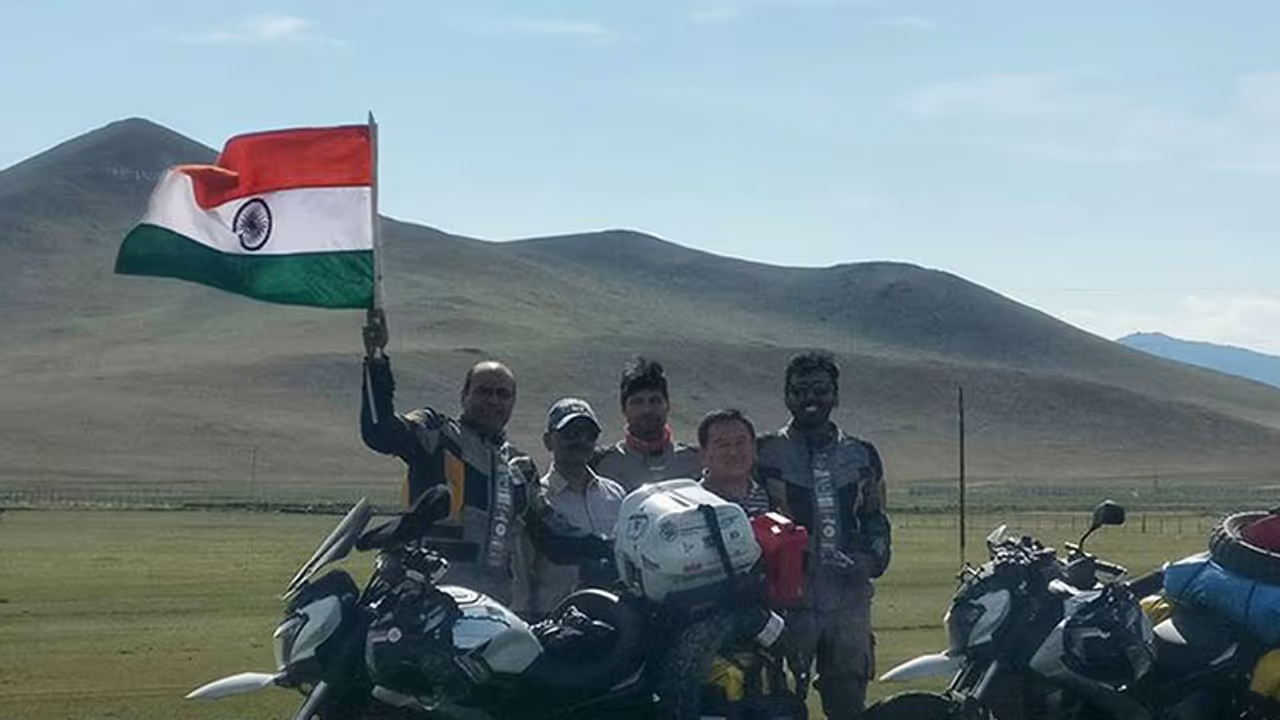3 Kannadigas crossed the Road of Bones, first Indian team to achieve First time Indian automobile firm Bajaj built Dominor 400 bikes were used for the cross Covered the cross in 40 days, covering 15,000 km passing through 6 countries
Sub-zero temperature, long stretches of deserted roads, stretches with no roads at all, crumbling bridges, downpours allowing zero visibility, flooded roads collapsing, crossing floods, camping at odd locations, fear of polar bear and other cold climate wild animals… and many more such challenges, making it one of the most difficult road crosses in the world. Crossing the Road of Bones in Siberia is only for the bravehearts. But the three bikers from Karnataka have made history as the first Indian team to cross the Road of Bones on two-wheelers.

Hailing from Dakshina Kannada, residing at Bengaluru, Deepak Kamath, Dilip Krishna Bhat and Sudheer Prasad crossed the Road of Bones on their Bajaj built Dominor 400 bikes in 40 days, covering 15,000 km passing through six countries. The only other Indian to cross the Road of Bones is Nidhi Tiwari, a north Indian settled in Bengaluru, on four-wheeler, in 2015, reports Kannada Prabha. This is also the first time that Indian built bikes Bajaj Dominar 400 were used, on the cross where only Yamaha, Kawasaki and BMWs had travelled, earlier.
The trek started in June, from Tashkent, Uzbekistan. They had a bad start as when the bikers and bikes arrived there by flight, they were shocked to see that the batteries needed to start the bikes were not packed. There was no time to get them from India as they did not have Visa to stay long. They combed the entire Tashkent and finally found China made batteries. With great anxiety if they would work, the bikers tried their luck and fortunately they worked. The journey that was to start on June 9 was delayed by 2 days and they took off on June 11.
They covered Uzbekistan, Tajikistan, Kyrgyzstan, Kazakhstan and entered the central -Russia. They turned east and entered Mongolia. Travelling through Mongolia they entered the Siberia and crossed the Road of Bones and reached their destination Magadan. They travelled on the historic Pamir Highway, in Dushanbe, capital of Kazakhstan and passed through Afghan borders and reached Khorog, where China and Tajikistan meets. From Khorog they travelled alongside the snow-clad mountain range of China, passed through lake Isilkul and entered Russia through Kazakhstan. It took 48 days, 15,000 km covering 6 countries to complete the motorcross.
The best part was travelling along the border of Lake Baikal. The lake is 2300 km in diameter and is as big as Britain, with a depth of 1.64 km. It is said that this lake makes up for 22 per cent of world’s potable sweet water. When the bikers arrived after travelling hundreds of kilometres here at Ulan Bator, capital of Mongolia, they were given a grand welcome by the Indian Embassy and the Mongolian officials. They were escorted with police in a grand parade.
The Road of Bones gets its name from the historical fact that between 1930 and 1950 Russian leader Stalin got a Kolyma Highway constructed to facilitate transport of materials in Siberia. The stretches of 2000 km at Yakutz where sub-zero temperature prevails was constructed by the war prisoners, most whom died and their bodies were buried under as the roads were constructed. An estimated five lakh prisoners of wars were buried under this road. The 420 km of road is not in use now as alternative roads are constructed. The old road called the Old Summer Road is used only by adventure enthusiasts for dare devil treks.
